- Jo’Quavious Marks has a clear path to immediate playing time: Marks could replace Dare Ogunbowale as the Houston Texans’ third-down and two-minute drill running back.
- Marks will also need a role in the run game: Most running backs need at least some early down snaps to be a fantasy starter, which means he will need to be the handcuff to Joe Mixon, or carve out a role.
- Final chance to claim 25% off PFF+: Use code DRAFT25 and unlock access to player grades, fantasy tools and the 2025 Draft Guide
Estimated Reading Time: 5 minutes

PFF’s Fantasy Football Player Profile series delivers the most in-depth fantasy football analysis available for the 2025 season.
Using PFF’s exclusive data, we evaluate player performance, competition for touches and how teammates and coaching staffs will impact each player's fantasy football outlook.
Last updated: 7:15 a.m. Thursday, May 1
Click here for more draft tools:
NFL Draft Big Board | Mock Draft Simulator | NCAA Premium Stats
2025 PFF Draft Guide | Mock Draft Hub | Prospect Data Profiles
Draft Position Rankings
Player performance
Jo'Quavious Marks spent the first four years of his collegiate career at Mississippi State, where he played the most offensive snaps among the running back rotation in all four seasons. He began his career as a more traditional receiving back for his first three seasons. In his fourth year, they gave him more opportunities as a rusher and fewer as a receiver. After consistently being part of a rotation, he transferred to USC, where he was utilized in a more featured role, experiencing notable increases in carries compared to the rest of his career, and he returned to seeing significant snaps as a receiver.
His overall offensive grade increased by a few points each season. He showed a strong ability to break long runs but has never been a player to avoid a lot of tackles. Like a typical receiving back, he struggled running the most against eight-man boxes. His receiving statistics generally improved throughout his college career, notably as he reduced the number of dropped passes. His receiving per-route numbers took a step back at USC, primarily due to a decreased target rate.
Our draft guide notes that for Marks to take his play to the next level, he needs to be more decisive in the open field.
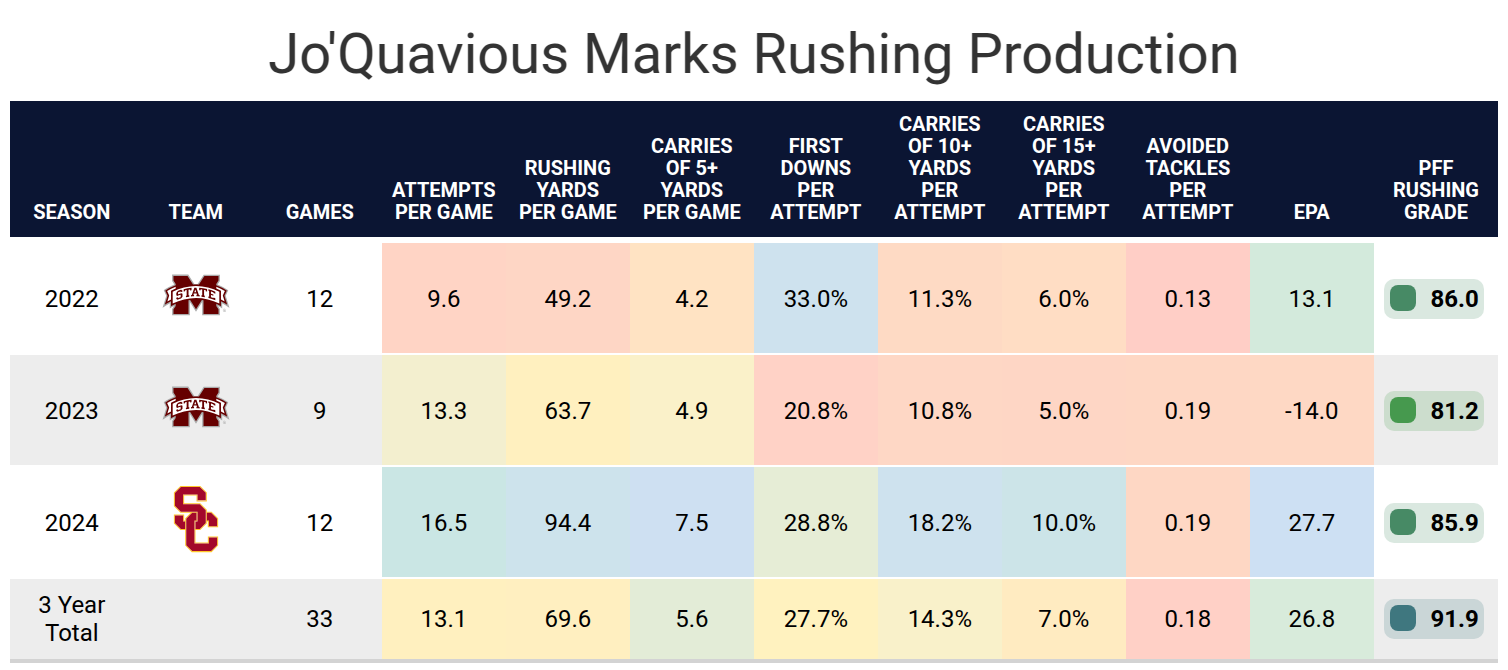
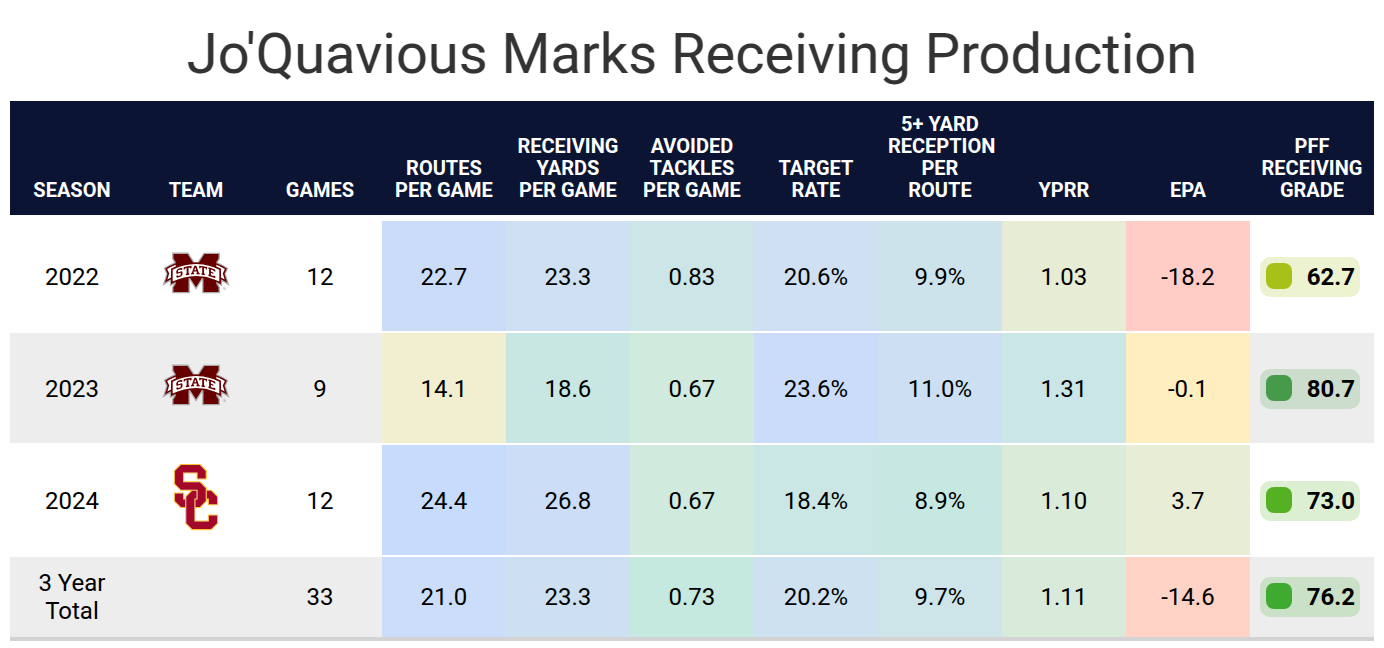
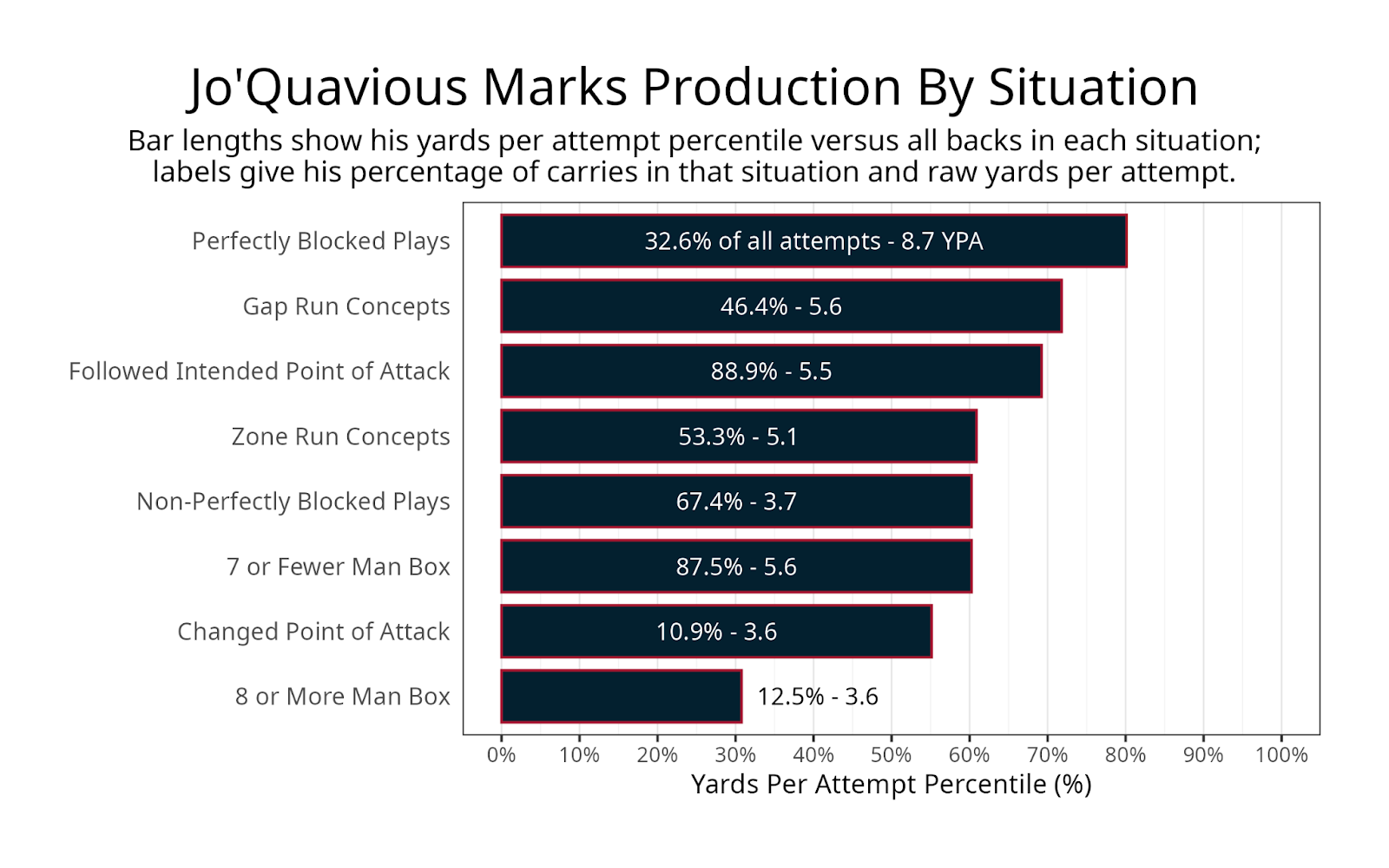
Projected role
Marks landed with the Houston Texans, who had a very straightforward backfield in 2024. Joe Mixon was the starter on early downs, while Dameon Pierce was the backup and Dare Ogunbowale was the third-down back. Ogunbowale played more often than a typical third-down back because he was on the field for 85% of his team's two-minute drill snaps compared to 13% the season before. Most teams split snaps between their early down back and third-down back during the two-minute drill.
Marks’ initial role will likely be as a third-down back, which means he needs to beat out Ogunbowale for the role. Ogunbowale is one of the older active running backs at 31 years old. Marks would have more fantasy value than a typical third-down back because he would likely play ahead of Mixon during two-minute drill snaps. While Ogunbowale never received a high target rate, Marks’ talent would likely warrant more targets.
In most fantasy leagues, a running back who only plays on third downs and during the two-minute drill won’t be enough to be fantasy-relevant. He would likely need to beat out Dameon Pierce as the primary backup on early downs. This would give him handcuff value if Mixon suffers an injury. It’s also possible that the Texans will scale back Mixon’s opportunities after 2,135 career touches. If Marks could play third downs, the two-minute drill and some early down snaps, that would give him an outside shot at being a top-30 fantasy running back, even without a Mixon injury.
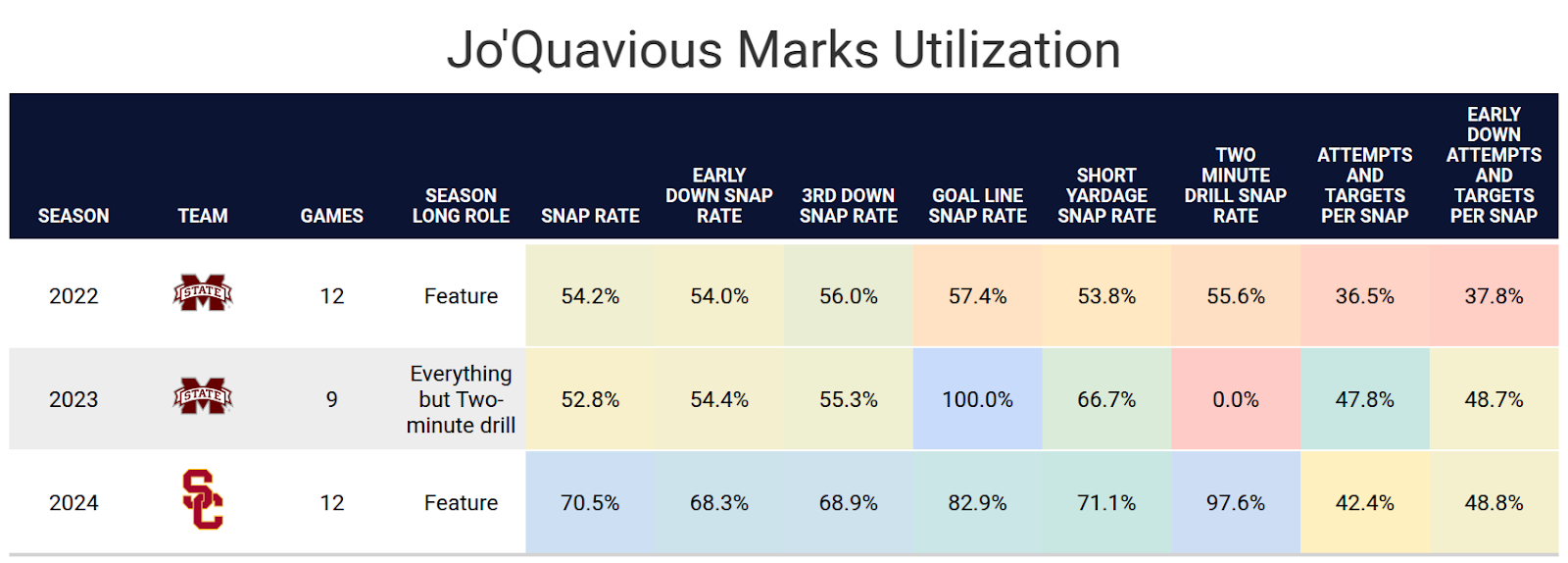
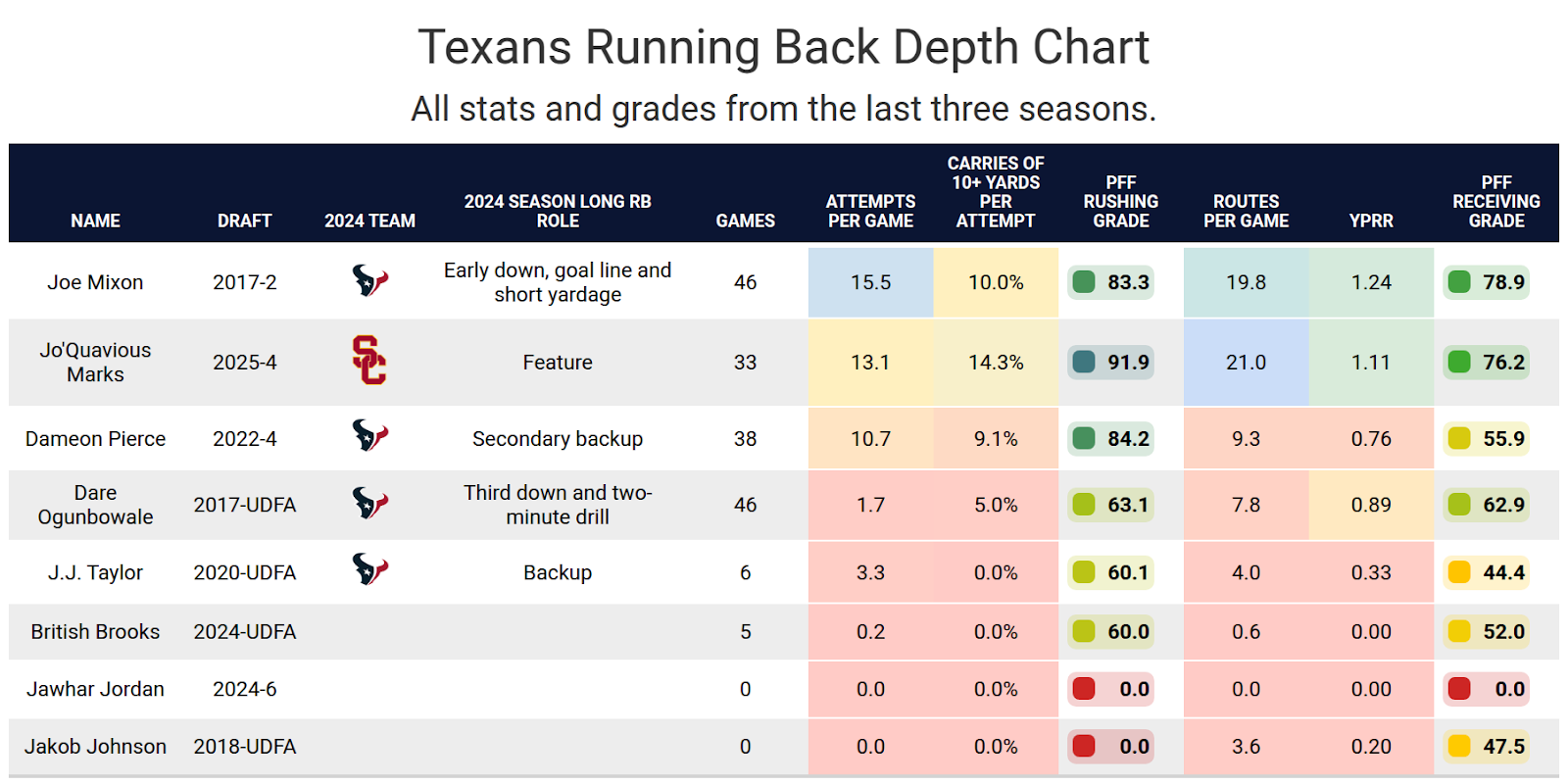
Impact of teammates
The Texans added Nick Caley as their new offensive coordinator. Caley worked his way up the college ranks and spent most of his time in the NFL as a tight ends coach. Last year, he added the title of passing game coordinator, but he’s never been the lead coach on an offense. He’s been a part of teams with a single feature running back, teams with a three-back committee, and everywhere in between. We don’t have a good sense of whether Caley would change how the Texans’ running backs rotate.
The big concern about the entire Texans team is the offensive line. Their former left tackle, Laremy Tunsil, was known throughout his career for being an excellent pass protector. Still, he was also the only Texans offensive lineman to earn a run-blocking grade above 64.0 last season. The team replaced Tunsil with Cam Robinson, who has graded 60.0 or worse in run blocking each of the previous six seasons. While a sub-par offensive line is typically bad for running backs, there is a chance it will lead to more dump-off passes to Marks. However, Marks’ needs perfectly blocked runs in order to be successful in the run game more than the typical running back, so this will hurt his rushing.
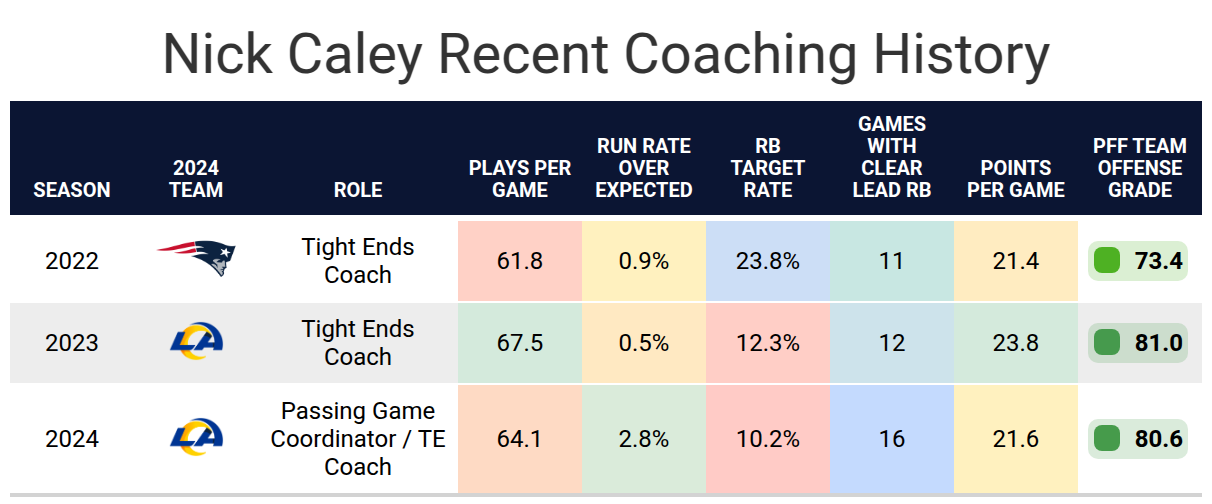
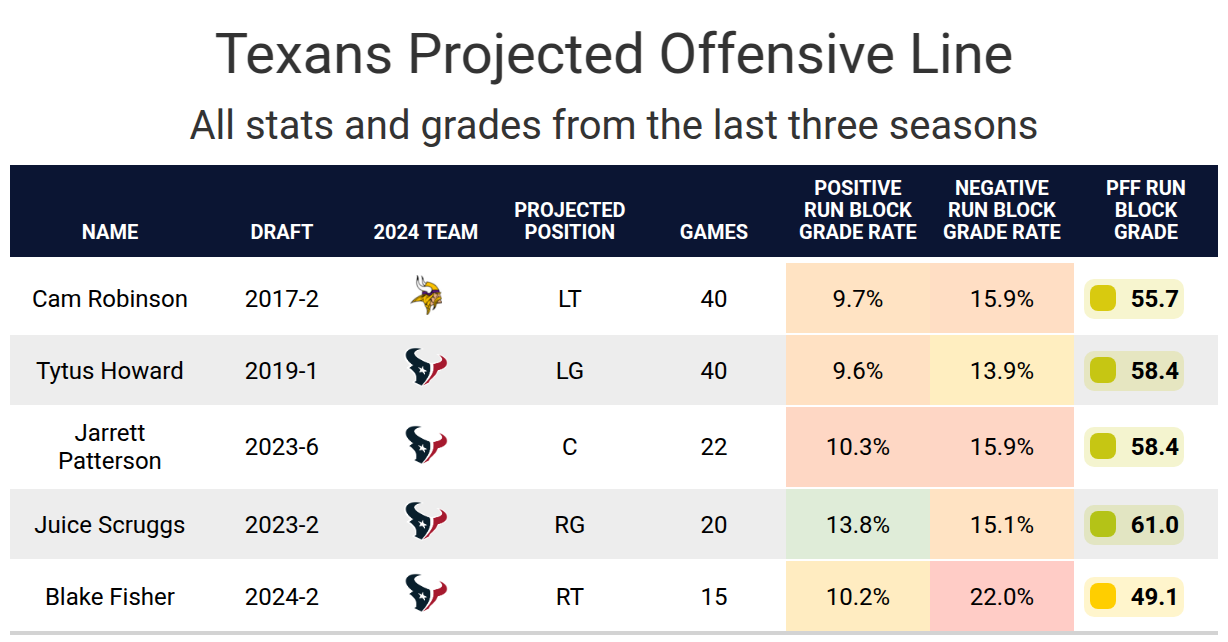
Bottom line
Marks is likely to be a receiving back, which typically only has value in larger fantasy leagues. Still, there is a chance he can also be the primary backup behind Mixon, which would give him potential in all leagues.
Footnotes
- Statistics in tables and charts were chosen based on their ability to predict future fantasy performance on a per-game or per-opportunity basis or to describe the player relative to others at the same position.
- “Opportunities” are defined as passing dropbacks, rushing attempts and routes run as a receiver.
- Numbers are provided either by season or based on the past three years. For rookies, only college statistics are included. For non-rookies, only NFL statistics are considered, regardless of whether they played in college within the previous three years.
- As college competition is easier than NFL competition, most rookies are likely to see a decline from their historical numbers.
- Only FBS data is considered for college players and comparisons.
- Kneel-downs are removed from rushing data to provide cleaner quarterback rushing rate statistics.
- The table colors in this article range from blue (indicating good/high) to red (indicating bad/low).
- All percentiles and color codings compare the given player to others with a high sample of opportunities. Generally, the cutoff is one-third of the possible opportunities in the sample. If a player does not meet the threshold, they are still included in the comparison, though their results may appear better or worse than expected due to the smaller, less predictive sample size.
- Information on utilization classifications and their importance can be found here for running backs, wide receivers and tight ends.



 © 2025 PFF - all rights reserved.
© 2025 PFF - all rights reserved.